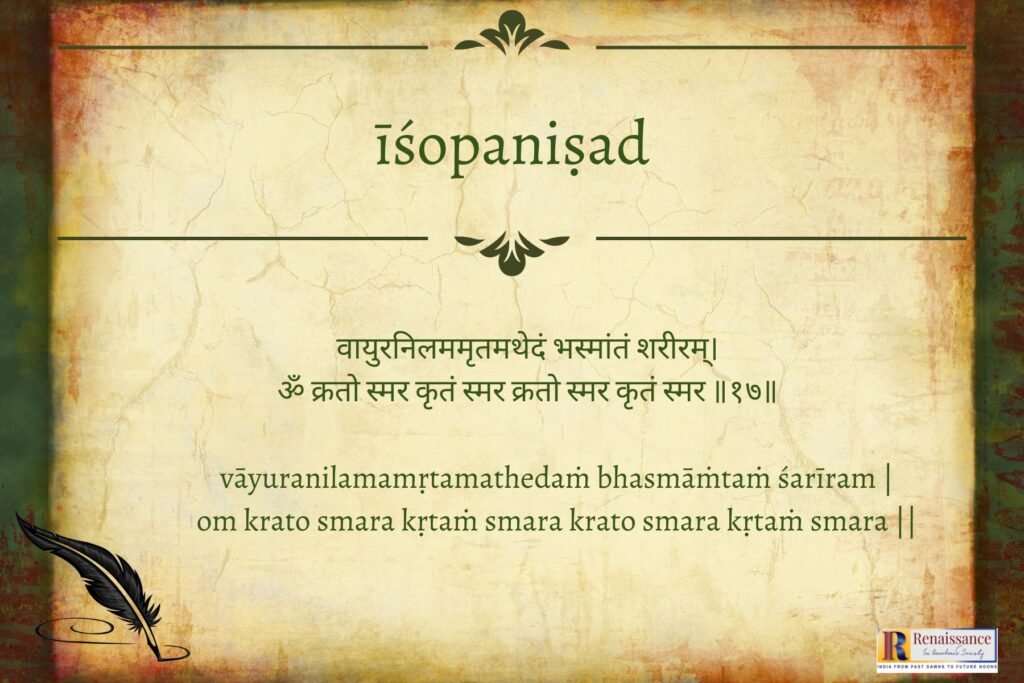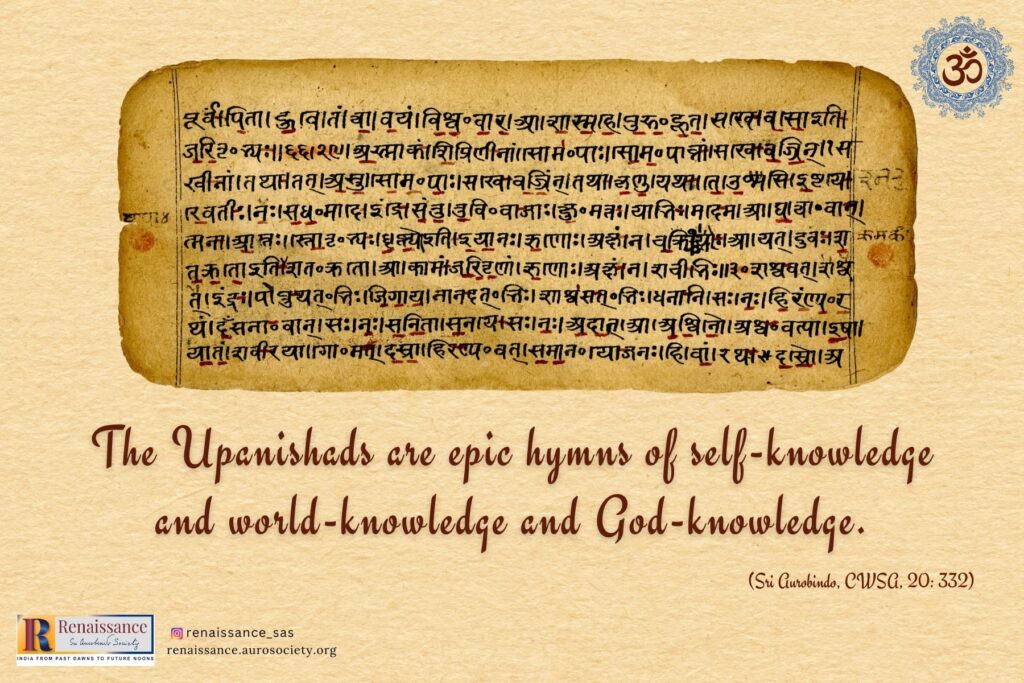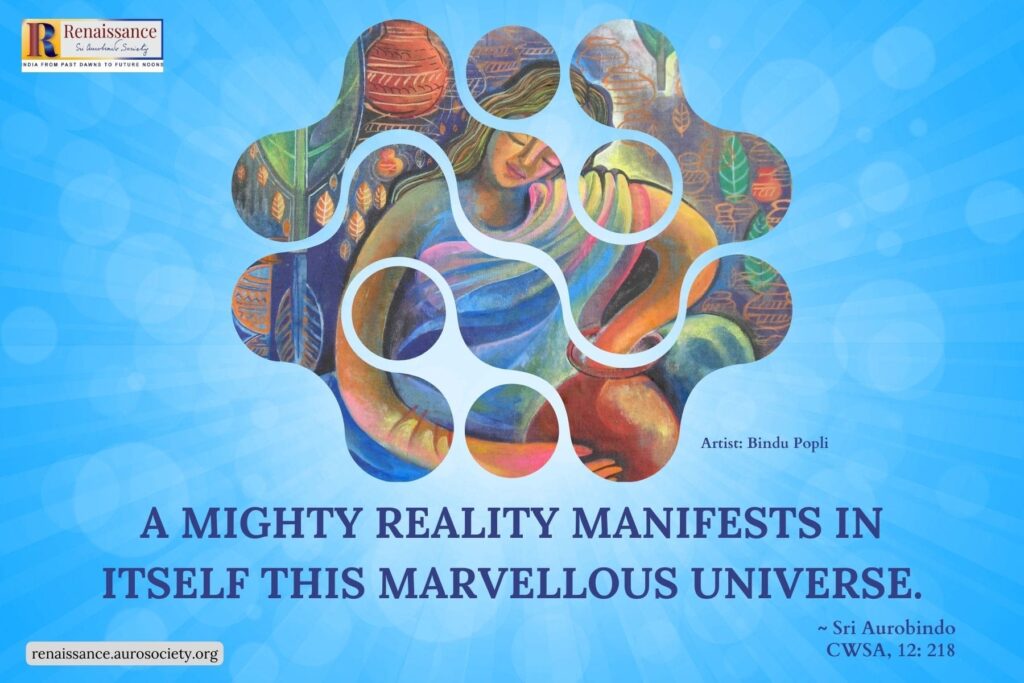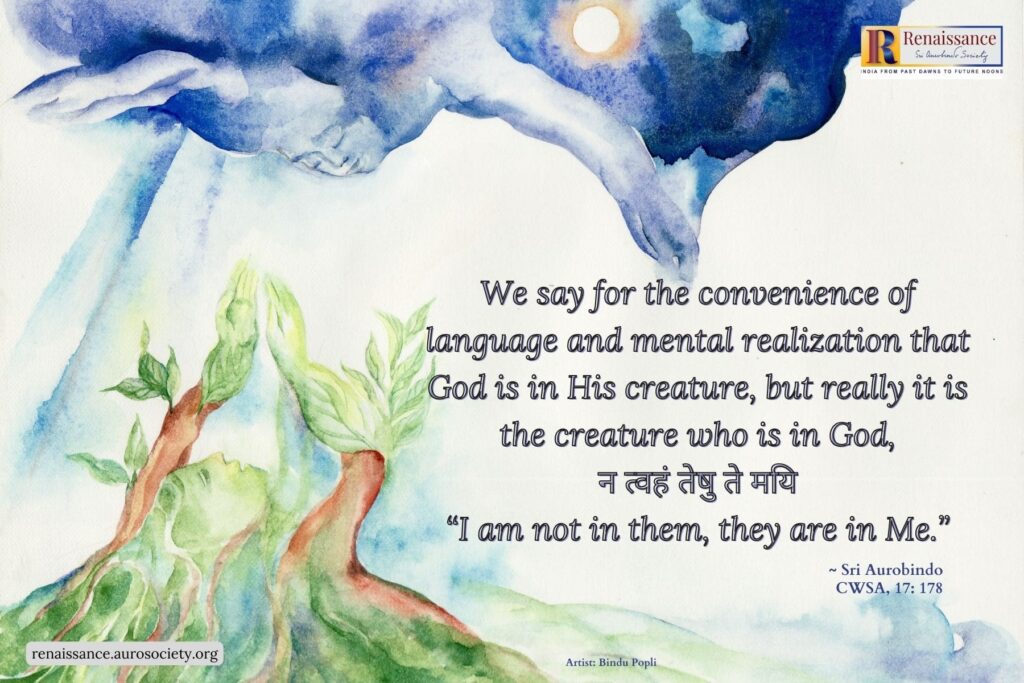Continued from Part 5
We now arrive at the last two verses of the Upanishad.
वायुरनिलममृतमथेदं भस्मान्तं शरीरम् ।
ॐ कतो स्मर कृतं स्मर कतो स्मर कृतं स्मर ॥१७॥
अग्ने नय सुपथा राये अस्मान् विश्वानि देव वयुनानि विद्वान् ।
युयोध्यस्मज्जुहुराणमेनो भूयिष्ठां ते नमउक्तिं विधेम ॥१८॥
Through the grace and the intervention of Surya the mind of man grows into illumination. But Knowledge is not all. There has to be a corresponding upliftment and enlargement of the faculties of action. They too should be liberated from the limitations under which they labour.
But the body, the physical frame of man is circumscribed on all sides and subject to the conditions of birth and death over which he has little control. However, there is, says the seer, a power active in the body, the dynamism of life-energy which is the effective source and executor of all action and that in its true nature—which is revealed in the light of the Surya, the Lord of illumination,—is immortal.
To manifest this Life-principle more and more and enable it to speed into its own untrammelled course of conquest and progress, the God of Life, Vayu (Matarishwan in an earlier verse) is remembered in prayer.
“There is a Truth covered by a Truth,” runs the Vedic passage, “where they unyoke the horses of the Sun; the ten hundreds stood together, there was That One; I saw the greatest (best, most glorious) of the embodied gods.”
(Sri Aurobindo, CWSA, Vol. 16, p. 17)


Find the complete Isha Upanishad and its translation by Sri Aurobindo HERE.
Normal human activity, however, proceeds under the drive and impulsion of Prakriti, Nature which is shot through and through with Ignorance and revolves round the fulcrum of the ego. Man is a slave of this activity; he is rushed into it and becomes the creature instead of its master as he is meant to be. It is only in proportion as he awakens to the liberating knowledge and releases himself from the holds of the lower ignorant nature that is he is in position to disengage himself from this thraldom and assure his rightful place. He begins to see that behind all action there is a secret Will leading things to a destined goal.
Whatever may be the apparent motives and circumstances which govern activities there is at their base a secret Will and Power whose origin is deeper than the surface nature. This is the Kratu, the Divine Will which is called Agni in the Veda—the Will which motivates and executes, with its dynamic power, in the universe as well as in the individual.
“He is divine force which manifests first in matter as heat and light and material energy and then, taking different forms in the other principles of man’s consciousness, leads him by a progressive manifestation upwards to the Truth and the Bliss.”
(Sri Aurobindo, CWSA, Vol. 17, p. 10)
One has to realise this truth in one’s own being; gain oneness with this secret spring of Movement if one hopes to acquire control and direction over all one’s activities.
The seer calls upon this God Agni to come into his own, retain the thread of continuity in the actions put forth in this life-time and before, and relate them in the waking consciousness also in the right sequence, so that the control ensuing from a conscious coordination of doings may perfect itself. This the Agni can do, because being at the fount of manifestation on earth, he knows. He knows the truth of all that is born, jatavedas, the Intention governing all activities; and knowing, he also sees the direct way in which things lead to their fulfilment.


See Digital Exhibit
Isha Upanishad – An Introducation and Translation by Sri Aurobindo
Amidst the maze of ways and byways with which the course of man’s life is strewn, Agni knows which is the straight Path. Caught up in the web of ignorance and falsehood, impelled by the goad of conflicting desires and passions, man turns and deflects, loses sight of the good and the obvious direction. This is the pull of sin which man suffers and which keeps him away from the natural, the straight course. As Sri Aurobindo states:
“Sin, in the conception of the Veda, from which this verse is taken bodily, is that which excites and hurries the faculties into deviation from the good path. There is a straight road or road of naturally increasing light and truth, ṛjuḥ panthāḥ, ṛtasya panthāḥ, leading over infinite levels and towards infinite vistas, vītāni pṛṣṭhāni, by which the law of our nature should normally take us towards our fulfilment. Sin compels it instead to travel with stumblings amid uneven and limited tracts and along crooked windings (duritāni, vṛjināni).”
(CWSA, Vol. 17, p. 10)
The seer invokes the aid of Agni to pass beyond the range of this sin and to that end offers “completest submission and the self-surrender of all the faculties of the lower egoistic human nature to the divine Will-force, Agni, so that, free from internal opposition, it may lead the soul of man through the truth towards a felicity full of the spiritual riches, rāye.” (Sri Aurobindo, CWSA, Vol. 17, p. 10)
It hardly needs to be pointed out that these four crowning verses are not the last prayer of a dying man[1] as taken by some, but powerful invocations from the seeker who has by dint of lifelong effort arrived at a crucial stage when the intervention from the very Gods alone can enable him to surmount the last barriers, uplift him and open still higher vistas of Light and Power leading to the final goal of Immortality while still living on earth for a full span of life, for a hundred years, śataṁ samāḥ.
Notes:
[1] who is preparing to shed the body to dissolve into the material elements, and to merge the breath in the primary Prana, summoning up the accumulated phala of rituals performed during his life, and with speech—which is all that is left to him at that moment as means of worship — pleads to God Agni to lead him by the bright path—the devayana — to his destination in the Brahma-loka.

CONCLUDED
Read previous parts:
Part 1, Part 2, Part 3, Part 4, Part 5
~ Graphic design: Biswajita Mohapatra



